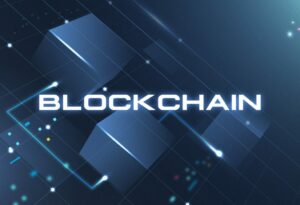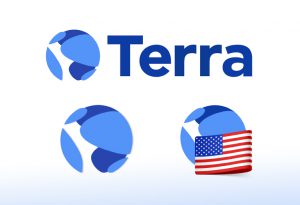
Table of Contents
ToggleIf you believe, as I do, that Satoshi Nakamoto is watching us from somewhere on this planet, you can share that the scope of the revolution propelled by his creation keeps him gaping and smiling.
“The power of blockchain technology, it doesn’t end at Bitcoin and cryptocurrencies” is an oft-repeated phrase. But how true is this phrase? From my point of view, one hundred percent.
In this article, in which I will tell you what Web 3.0 is, I hope to clarify the truth of the phrase and give you a clearer idea of the revolution we are in a position to enjoy.
What is Web 3.0?
Web 3.0 is a new approach, from a philosophical point of view, to how we build and create the ecosystem we call “internet”. Web 3.0 respects the principle that “the Internet should be open, freely accessible and decentralized“.
In short, it is an improvement to the current web tools, which can be summarized in the following characteristics:
-
- It is powered by blockchain technology.
- Platforms are “permissive”
- Users own their personal data
- The value of the system is distributed through cryptocurrencies.
- System control is decentralized
Let’s move on to the analysis of each of these main features and advantages of Web 3.0.
Powered by blockchain technology
Web 3.0 is a consequence of the evolution in the implementation of blockchain technology, which saw the light of day with Bitcoin.
The proposals and changes brought about by the implementation of this cryptocurrency can be summarized as follows:
- Elimination of intermediaries
- Peer-to-peer transfers
- Decentralization of information storage
- Publicity of transactions
- Elimination of the need for permission to participate in the system.
So, when we hear actors mentioning that blockchain technology is only taking its first steps with cryptocurrencies, they are referring to extending these features beyond them. And as you can imagine, now it’s the Web’s turn.
From these characteristics, we can glimpse what Web 3.0 will have to offer us.
Permissive” platforms
This feature speaks for itself. We want to develop and deploy an application on Ethereum, do we email Vitalik Buterin for permission, or do we talk to Do Kwon to launch our platform on Terra?
Of course not. In Web 3.0, all you have to do is work to develop your own application, pay for the deployment costs and you’re up and running… Mind you, I don’t mean this is easy, but you don’t have to ask anyone’s permission.
Users own their personal data
Here we come across a point, which became extremely important after the events of the last few years, such as the famous “Cambridge Analytica” case where Facebook user data was leaked.
In the blockchain, data is public and privacy solutions cover different needs. When we enter the world of cryptocurrencies, we are often warned that from now on we are the sole owners and responsible for our money. In Web 3.0, this ownership and responsibility is transferred to our own data.
The value of the system is distributed or decentralized
As with data, in Web 3.0 the value of the system belongs to the users who use it. By buying the governance token of a protocol, we are acquiring not only a cryptocurrency, but also “a part of that platform”.
The participation in the benefits of these applications can be found in different forms such as “rewards”, “liquidity mining”, “airdrops”, etc., but the common characteristic is that it will always end up in the wallet of the users.
System control is decentralized
This condition is closely linked to the previous characteristic. In decentralized applications, the ones that bring about the revolution and materialization of Web 3.0, it is the users who hold the reins.
In accordance with the provisions of the code, different types of votes and elections are held, allowing users to decide the direction of the applications they use on a daily basis.
Perhaps this explains the issue, widely discussed in the crypto spheres and also outside them, of the fanaticism that develops around certain blockchains or ecosystem projects. User involvement goes beyond what we have been used to, participation is really direct.
Before continuing, let’s review the path that brought us here.

A little history of the Web
Perhaps the above characteristics, those that Web 3.0 brings with it, seem like a good thing to you. But it is difficult to take dimension of the level of impact, in terms of revolutionary movement, until contrasting them with the current state of the Internet.
To provide a framework for these characteristics, I will now provide a brief analysis of the history of the Web, from its birth to the current stage.
Web 1.0
This 1.0, which adorns the subtitle, is clearly an addition after the date of birth of the Web, acquired in the course of its evolution.
In the early 1990s, Tim Berners-Lee developed a protocol capable of, simply put, sharing electronic documents. It is known as HTTPS. It is this invention that gave birth to the “World Wide Web” or the Internet as we know it today.
Thanks to HTML, the markup language that we still use today to structure our websites, the “Internet era” began.
Web 1.0, made its way with:
- Static Web pages
- Low bandwidth
- E-mail
- Forums
- Chat
In the beginning, it was an uncensored environment, with decentralization and possibilities for all. But those good times did not last forever…
Web 2.0
The evolution of the first stage advanced in the opposite direction in several aspects to the ethos with which the HTTPS protocol was created.
Although great improvements have been achieved in terms of usability, site quality, interactivity, content, access (cost of service) and speed (bandwidth), in some respects there have been setbacks, which Web 3.0 will correct.
We can refer to them as Web 2.0 advances:
- Dynamic web sites
- Enormous bandwidth growth
- Diversity of multimedia content
- Bloggin and micro-blogging (a new form of journalism)
- Social networking
- Podcast
Undoubtedly, all highly beneficial points in well-meaning hands. On the negative side, we find the commercialization of user data, centralization of power and value in a few corporate giants, unjustified censorship and difficulty of growth for small players.
Web 3.0
Now, it will be possible to see more clearly the advantages of this revolution that comes with blockchain technology.
Beyond the technological revolution that blockchains imply, I believe that the greatest impact of this new stage is from a sociological, philosophical and economic point of view.
Power relations find a new platform from which to reconfigure themselves. Countless social groups find themselves coordinating resources, ideas and economic power without ever having seen each other’s faces. Behind the graphic representation of an NFT, we can find people collaborating with each other, developing relationships and moving towards common goals. The Web 3.0 revolution is far from finding its final form.

Changes proposed by Web 3.0
Before closing this article, I will leave some easily identifiable examples to understand the changes proposed by Web 3.0. Let’s tackle first the concepts and then the examples.
Conceptual changes
The applications that we know and use on a daily basis, become decentralized. And what does this mean?
Instead of interacting with a server, we start interacting with other human beings who play this role. Hosting ceases to belong to centralized actors to be carried out in a decentralized manner.
Information is no longer stored in centralized databases by corporate giants such as Amazon Web Service, but in decentralized blockchains. In this way, we eliminate the problem of the single point of failure when providing an application or service.
Finally, we say goodbye to the current way of consuming these data, through APIs, Web 3.0 catapults us to direct interaction with Smart Contracts.
Everyday examples
Now, these concepts may sound bombastic, but where do we find them in our day-to-day lives as users?
Let’s list some applications to get a clearer idea:
- In terms of hosting and data storage, Web 2.0 made Amazon Web Service, Google Drive and Dropbox famous. Web 3.0 offers applications such as Filecoin, Sia and Storj.
- When it comes to browsers, Google Chrome, Mozilla Firefox and Internet Explorer marked an era. The new generation is born from the hand of Brave and Breaker.
- A topic that is always controversial, domain names. Web 2.0 gave rise to giants such as Verisign, Icaan and GoDaddy, while on the decentralized side we have Ethereum Name Service, Polkadomain or Terra Name Service, being able to find an example for each blockchain in operation.
- Industry giants in the world of music apps, content creation and talent, such as Spotify, Youtube and Medium, find examples such as Theta, Audius, LivePeer and Mirror on the opposite side of the street.
Logically, I could go on citing examples for a few hours, but the point is proven, Web 3.0 is already with us and there is no turning back.
What to expect from Web 3.0
This brief review of one of the concepts that is changing the way we relate to “the Internet” is proof that its scope is not confined to the limits of the Web.
The principles outlined in Satoshi’s white paper exceeded the framework of Bitcoin, as well as the internet itself. At this point we are changing the way we interact and trust each other as human beings.
Web 3.0 means the return of power and decision making to the majority, to the detriment of the great accumulation of these concepts that certain groups achieved in the last centuries. This return is not free, it implies a great responsibility on the part of the users and, above all, the need to avoid known sins…




